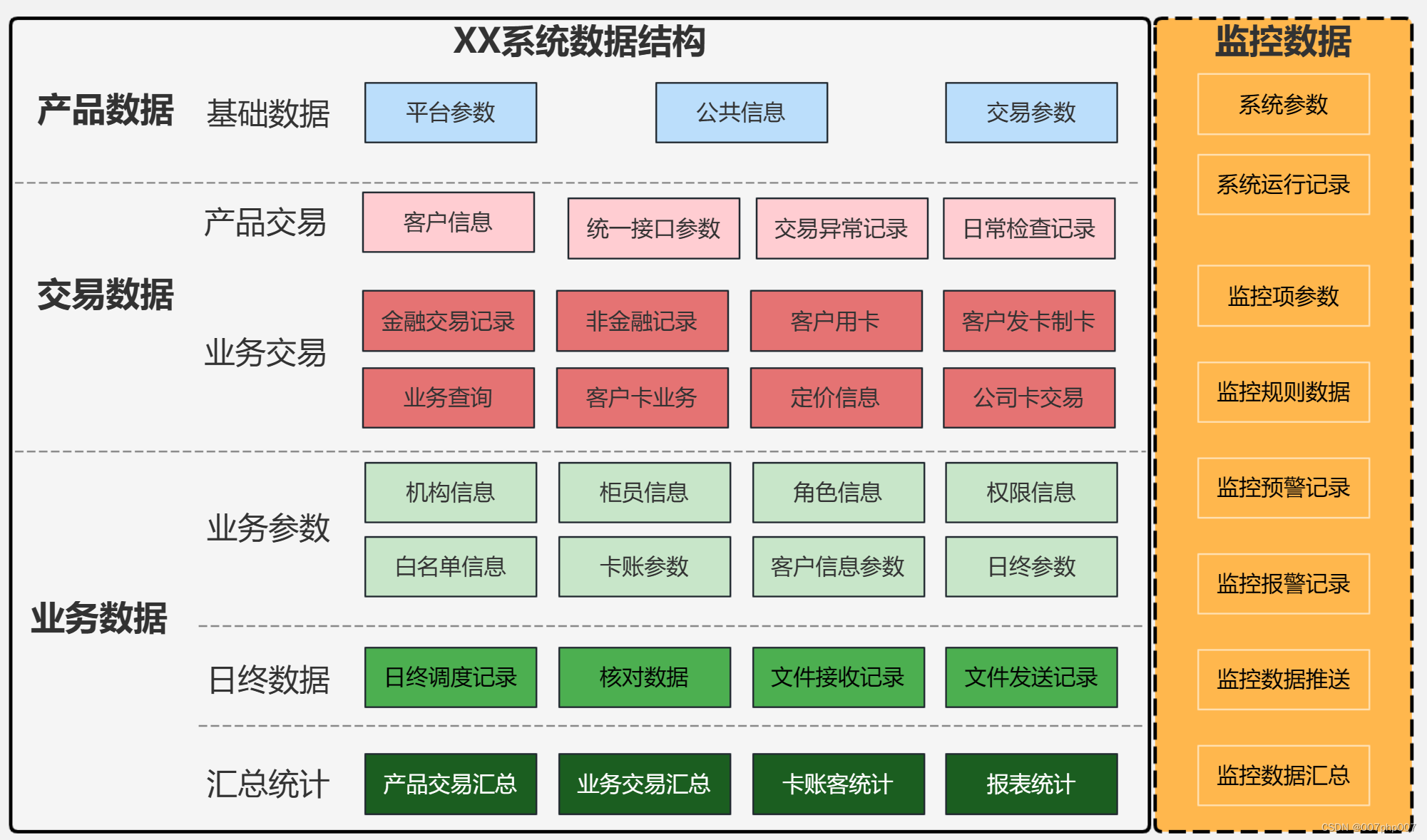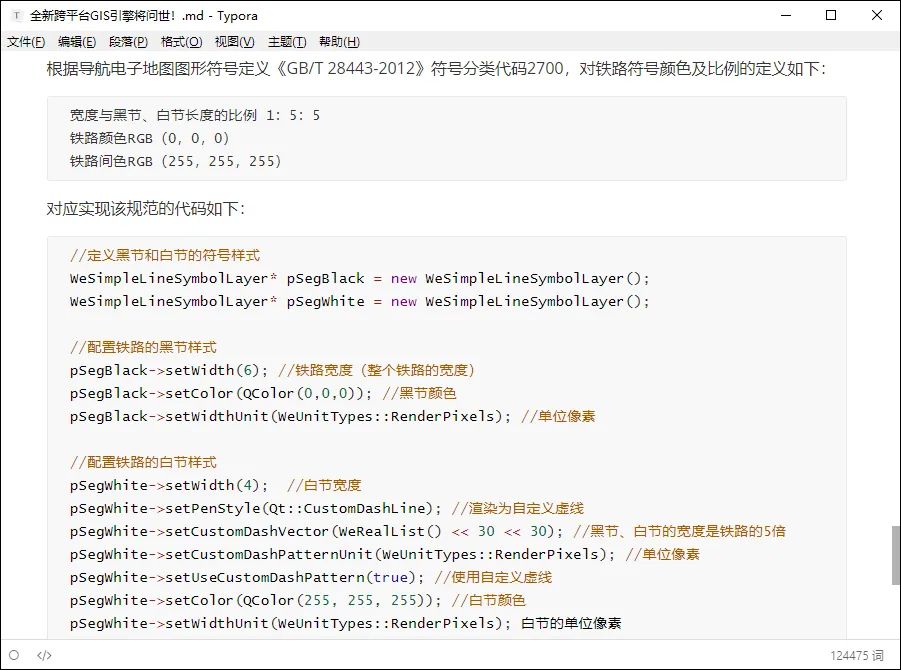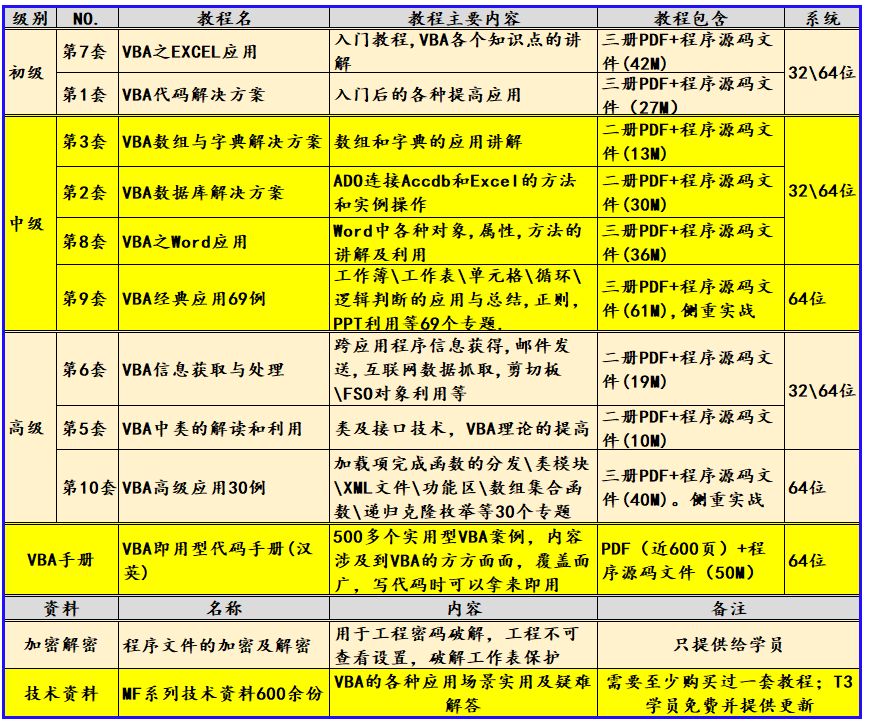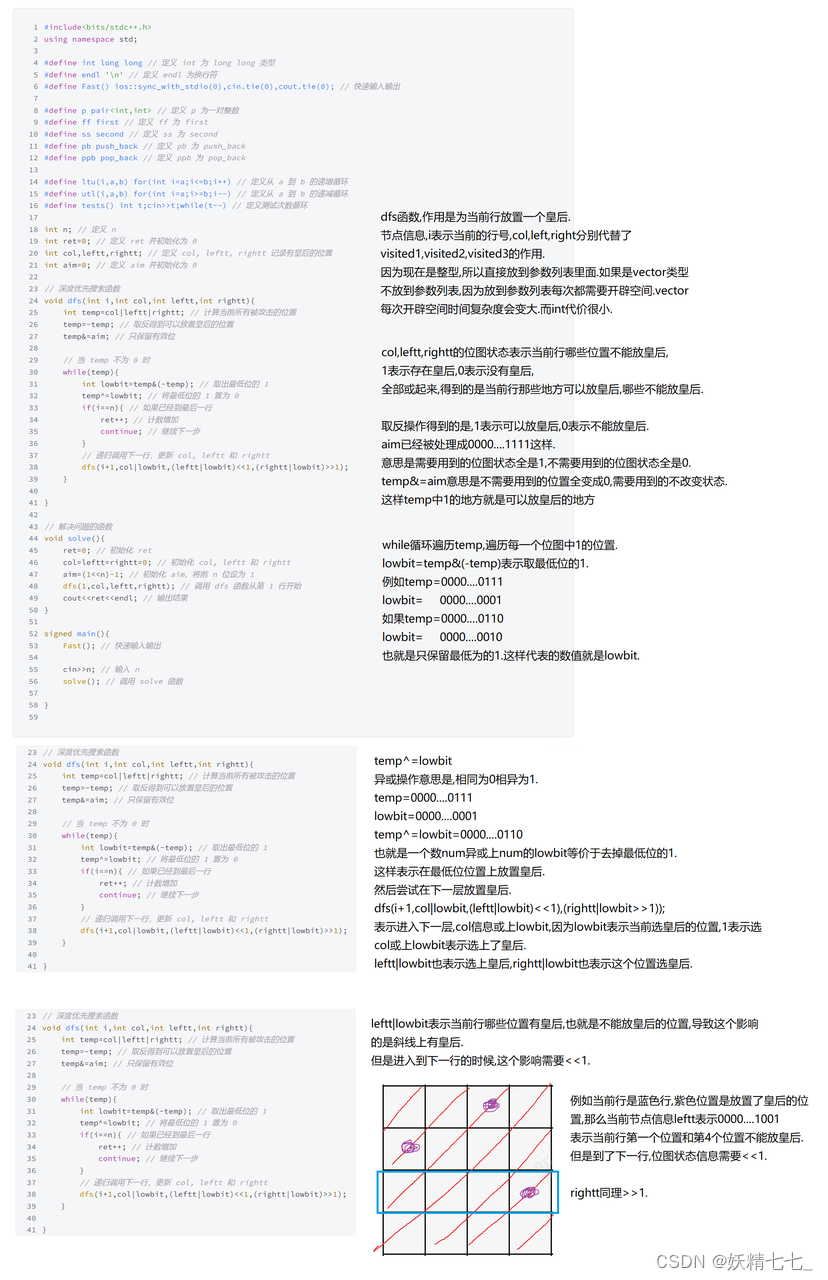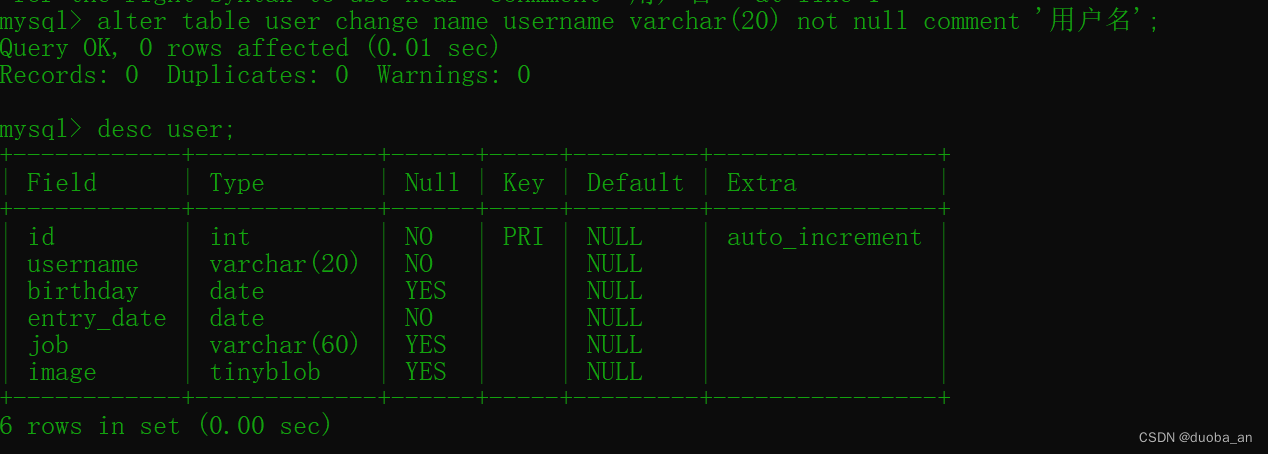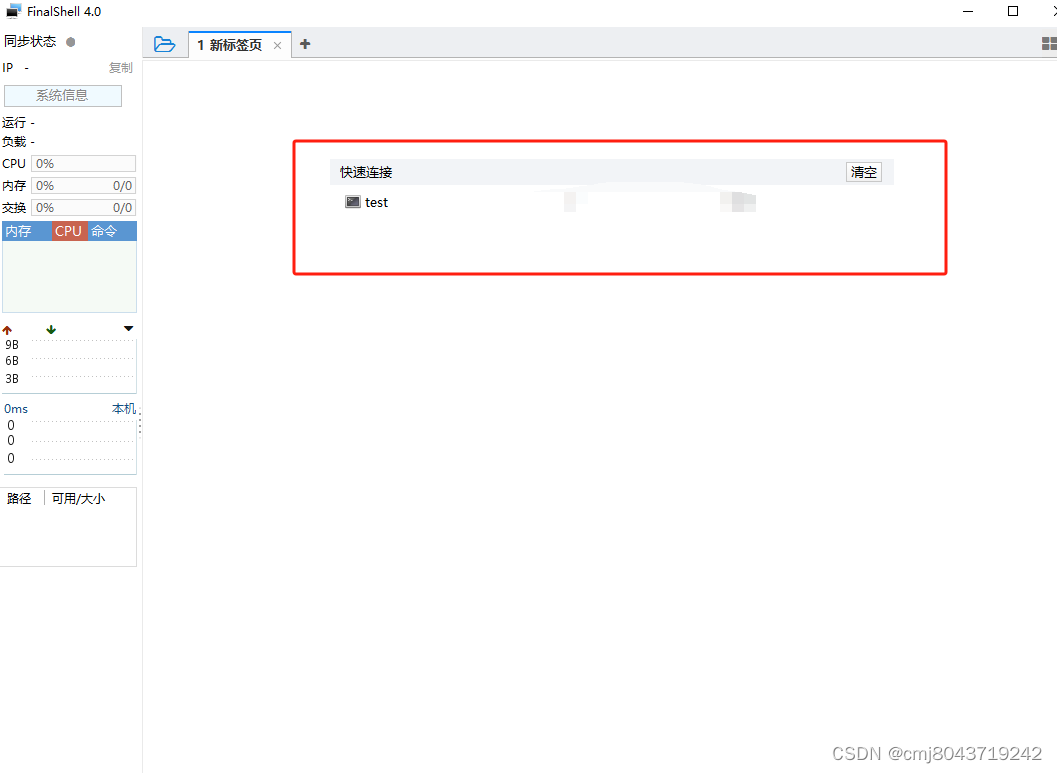用tanh函数画图
圆形

import numpy as np
import matplotlib.pyplot as plt# 创建一个二维网格
xx = np.linspace(-1, 1, 1000)
yy = np.linspace(-1, 1, 1000)
x_i, y_i = np.meshgrid(xx, yy)# 圆的半径和中心
r = 0.4
center_x, center_y = 0, 0 # 假设圆心在(0, 0)# 计算每个网格点到圆心的距离
distance = np.sqrt((x_i - center_x) ** 2 + (y_i - center_y) ** 2)# 使用tanh函数来近似表示半圆区域
# 注意:tanh函数不能直接用于表示半圆,但我们可以通过设置阈值来近似表示
epsilon = 0.01 # 控制tanh函数的“陡峭度”
u0 = 0.5 * (1 + np.tanh((r - distance) / epsilon))
u0[distance > r] = -1 # 强制圆外的值为-1# 绘制结果
fig, ax = plt.subplots()
p = ax.pcolormesh(x_i, y_i, u0, cmap='viridis', shading='auto')
ax.set_aspect('equal', 'box') # 保持x和y轴的比例相同
fig.colorbar(p, ax=ax, label='u0 Value')# 设置标题和坐标轴标签
plt.title('Approximate Half Circle using tanh')
plt.xlabel('X')
plt.ylabel('Y')# 显示图形
plt.show()
半圆

import numpy as np
import matplotlib.pyplot as plt# 创建一个二维网格
xx = np.linspace(-1, 1, 1000)
yy = np.linspace(-1, 1, 1000)
x_i, y_i = np.meshgrid(xx, yy)# 圆的半径和中心
r = 0.4
center_x, center_y = 0, -1 # 假设圆心在(0, -1)# 计算每个网格点到圆心的距离
distance = np.sqrt((x_i - center_x) ** 2 + (y_i - center_y) ** 2)# 使用tanh函数来近似表示半圆区域
# 注意:tanh函数不能直接用于表示半圆,但我们可以通过设置阈值来近似表示
epsilon = 0.01 # 控制tanh函数的“陡峭度”
u0 = 0.5 * (1 + np.tanh((r - distance) / epsilon))
u0[distance > r] = -1 # 强制圆外的值为-1# 绘制结果
fig, ax = plt.subplots()
p = ax.pcolormesh(x_i, y_i, u0, cmap='viridis', shading='auto')
ax.set_aspect('equal', 'box') # 保持x和y轴的比例相同
fig.colorbar(p, ax=ax, label='u0 Value')# 设置标题和坐标轴标签
plt.title('Approximate Half Circle using tanh')
plt.xlabel('X')
plt.ylabel('Y')# 显示图形
plt.show()
两个圆形


import numpy as np
import matplotlib.pyplot as plt# 创建一个二维网格
xx = np.linspace(0, 1, 1000)
yy = np.linspace(0, 1, 1000)
x_i, y_i = np.meshgrid(xx, yy)# 圆的半径和中心
r1 = 0.15 # 如果要分开点,就设为0.14
r2 = 0.15 # 如果要分开点,就设为0.14
center_x1, center_y1 = 0.35, 0.5 # 圆心1
center_x2, center_y2 = 0.65, 0.5 # 圆心2# 计算每个网格点到圆心的距离
distance1 = np.sqrt((x_i - center_x1) ** 2 + (y_i - center_y1) ** 2)
distance2 = np.sqrt((x_i - center_x2) ** 2 + (y_i - center_y2) ** 2)# 使用tanh函数来近似表示半圆区域
# 注意:tanh函数不能直接用于表示半圆,但我们可以通设置阈值来近似表示
epsilon = 0.01 # 控制tanh函数的“陡峭度”
phi1 = np.tanh((r1 - distance1) / (2 * epsilon))
phi2 = np.tanh((r2 - distance2) / (2 * epsilon))u0 = np.maximum(phi1, phi2)
# u0 = 1 * (1 + phi1 + phi2) # 两种都可以生成两个圆# 分别找出距离两个圆心都大于半径的点的索引
outside_circle1 = distance1 > r1
outside_circle2 = distance2 > r2# 使用逻辑与来找出两个条件都满足的点
outside_both_circles = np.logical_and(outside_circle1, outside_circle2)# 将这些点对应的u0值设置为-1
u0[outside_both_circles] = -1# 绘制结果
fig, ax = plt.subplots()
p = ax.pcolormesh(x_i, y_i, u0, cmap='viridis', shading='auto')
ax.set_aspect('equal', 'box') # 保持x和y轴的比例相同
fig.colorbar(p, ax=ax, label='u0 Value')# 设置标题和坐标轴标签
plt.title('Approximate Half Circle using tanh')
plt.xlabel('X')
plt.ylabel('Y')# 显示图形
plt.show()
正方形

import numpy as np
import matplotlib.pyplot as plt# 创建一个二维网格
xx = np.linspace(-1, 1, 1000)
yy = np.linspace(-1, 1, 1000)
x_i, y_i = np.meshgrid(xx, yy)# 正方形的中心和边长
center_x, center_y = 0, 0 # 假设正方形中心在(0, 0),为了简化计算
side_length = 0.5 # 正方形边长的一半# 使用tanh函数来近似正方形的四个边界
# 注意:这不是一个完美的正方形,只是一个近似
epsilon = 0.01 # 控制tanh函数的“陡峭度”# 近似上边界
u_top = 0.5 * (1 + np.tanh((side_length - np.abs(y_i - center_y)) / epsilon))
# 近似下边界
u_bottom = 0.5 * (1 + np.tanh((side_length - np.abs(y_i + center_y)) / epsilon))
# 近似左边界
u_left = 0.5 * (1 + np.tanh((side_length - np.abs(x_i - center_x)) / epsilon))
# 近似右边界
u_right = 0.5 * (1 + np.tanh((side_length - np.abs(x_i + center_x)) / epsilon))# 四个边界的交集(即正方形内部)应取得高值
u0 = np.minimum(np.minimum(u_top, u_bottom), np.minimum(u_left, u_right))
u0[u0 < 0.99] = -1 # 强制非正方形内部的值为-1(可调整阈值)
u0[u0 >= 0.99] = 1 # 强制正方形内部的值为1(可调整阈值)# 绘制结果
fig, ax = plt.subplots()
p = ax.pcolormesh(x_i, y_i, u0, cmap='viridis', shading='auto')
ax.set_aspect('equal', 'box') # 保持x和y轴的比例相同
fig.colorbar(p, ax=ax, label='u0 Value')# 设置标题和坐标轴标签
plt.title('Approximate Square using tanh')
plt.xlabel('X')
plt.ylabel('Y')# 显示图形
plt.show()
长方形

import numpy as np
import matplotlib.pyplot as plt# 创建一个二维网格
xx = np.linspace(-1, 1, 1000)
yy = np.linspace(-1, 1, 1000)
x_i, y_i = np.meshgrid(xx, yy)# 长方形的中心和尺寸
center_x, center_y = 0, 0 # 假设长方形中心在(0, 0)
width = 0.6 # 长方形的宽度
height = 0.4 # 长方形的高度
half_width = width / 2
half_height = height / 2# 使用tanh函数来近似长方形的四个边界
epsilon = 0.01 # 控制tanh函数的“陡峭度”# 近似上边界
u_top = 0.5 * (1 + np.tanh((half_height - (y_i - center_y)) / epsilon))
# 近似下边界
u_bottom = 0.5 * (1 + np.tanh((half_height - (center_y - y_i)) / epsilon))
# 近似左边界
u_left = 0.5 * (1 + np.tanh((half_width - (x_i - center_x)) / epsilon))
# 近似右边界
u_right = 0.5 * (1 + np.tanh((half_width - (center_x - x_i)) / epsilon))# 长方形的内部是四个边界的交集,取四个边界中的最小值
u0 = np.minimum.reduce([u_top, u_bottom, u_left, u_right])
u0[u0 < 0.99] = -1 # 强制非长方形内部的值为-1(可调整阈值)
u0[u0 >= 0.99] = 1 # 强制长方形内部的值为1(可调整阈值)# 绘制结果
fig, ax = plt.subplots()
p = ax.pcolormesh(x_i, y_i, u0, cmap='viridis', shading='auto')
ax.set_aspect('equal', 'box') # 保持x和y轴的比例相同
fig.colorbar(p, ax=ax, label='u0 Value')# 设置标题和坐标轴标签
plt.title('Approximate Rectangle using tanh')
plt.xlabel('X')
plt.ylabel('Y')# 显示图形
plt.show()
边界上的长方形

import numpy as np
import matplotlib.pyplot as plt# 创建一个二维网格
xx = np.linspace(-0.5, 0.5, 1000)
yy = np.linspace(0, 0.5, 1000)
x_i, y_i = np.meshgrid(xx, yy)# 长方形的中心和尺寸
center_x, center_y = 0, 0.0625 # 假设长方形中心在(0, 0)
width = 0.5 # 长方形的宽度(长)
height = 0.125 # 长方形的高度
half_width = width / 2
half_height = height / 2# 使用tanh函数来近似长方形的四个边界
epsilon = 0.01 # 控制tanh函数的“陡峭度”# 近似上边界
u_top = 1 * (1 + np.tanh((half_height - (y_i - center_y)) / epsilon))
# 近似下边界
u_bottom = 1 * (1 + np.tanh((half_height - (center_y - y_i)) / epsilon))
# 近似左边界
u_left = 1 * (1 + np.tanh((half_width - (x_i - center_x)) / epsilon))
# 近似右边界
u_right = 1 * (1 + np.tanh((half_width - (center_x - x_i)) / epsilon))# 长方形的内部是四个边界的交集,取四个边界中的最小值
u0 = np.minimum.reduce([u_top, u_bottom, u_left, u_right])
u0[u0 < 0.99] = -1 # 强制非长方形内部的值为-1(可调整阈值)
u0[u0 >= 0.99] = 1 # 强制长方形内部的值为1(可调整阈值)# # 绘制结果
# fig, ax = plt.subplots()
# p = ax.pcolormesh(x_i, y_i, u0, cmap='viridis', shading='auto')
# ax.set_aspect('equal', 'box') # 保持x和y轴的比例相同
# fig.colorbar(p, ax=ax, label='u0 Value')
#
# # 设置标题和坐标轴标签
# plt.title('Approximate Rectangle using tanh')
# plt.xlabel('X')
# plt.ylabel('Y')
#
# # 显示图形
# plt.grid()
# plt.show()# 估算角点位置(这里只是估算,不是精确值)
# 左上角
x_left_top, y_left_top = center_x - half_width, center_y + half_height
# 右上角
x_right_top, y_right_top = center_x + half_width, center_y + half_height
# 左下角
x_left_bottom, y_left_bottom = center_x - half_width, center_y - half_height
# 右下角
x_right_bottom, y_right_bottom = center_x + half_width, center_y - half_height# 绘制结果
fig, ax = plt.subplots()
p = ax.pcolormesh(x_i, y_i, u0, cmap='viridis', shading='auto')
ax.set_aspect('equal', 'box') # 保持x和y轴的比例相同
fig.colorbar(p, ax=ax, label='u0 Value')# 设置标题和坐标轴标签
plt.title('Approximate Rectangle using tanh')
plt.xlabel('X')
plt.ylabel('Y')# 显示长方形四个角的坐标数字
plt.text(x_left_top, y_left_top, f'({x_left_top:.2f}, {y_left_top:.2f})', va='top', ha='right', color='red')
plt.text(x_right_top, y_right_top, f'({x_right_top:.2f}, {y_right_top:.2f})', va='top', ha='left', color='red')
plt.text(x_left_bottom, y_left_bottom, f'({x_left_bottom:.2f}, {y_left_bottom:.2f})', va='bottom', ha='right', color='red')
plt.text(x_right_bottom, y_right_bottom, f'({x_right_bottom:.2f}, {y_right_bottom:.2f})', va='bottom', ha='left', color='red')# 显示网格和图形
plt.grid()
plt.show()
